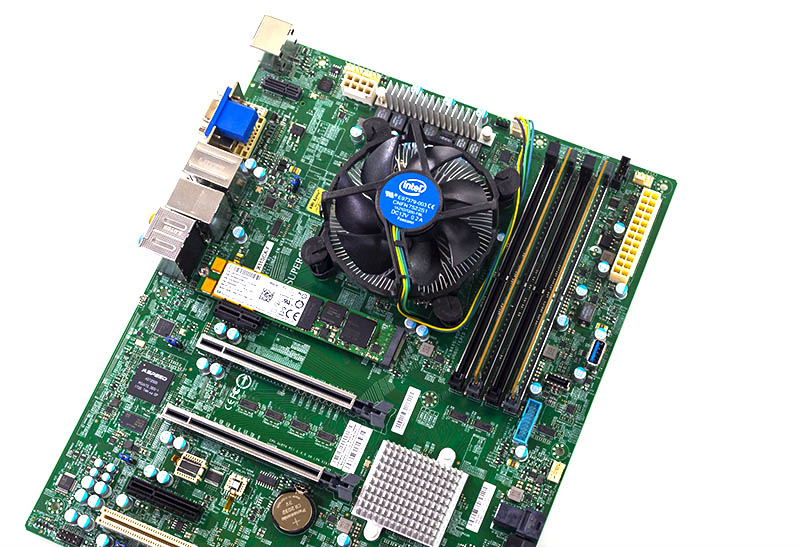The Intel Xeon E-2224 is perhaps the exact opposite of the innovative Intel Xeon E-2288G we reviewed. While the 8-core Xeon E-2288G offered something new that could go after adjacent server platform markets, the 4 core/ 4 thread Intel Xeon E-2224 offers a configuration we have seen for over a decade. Further, it is in legitimate danger of being marginalized by a CPU option, for the same socket, that costs half as much. In this review, we are going to pivot our series and focus on the lower-end part.
Key stats for the Intel Xeon E-2224: 4 cores / 4 threads with a 3.4GHz base clock and 4.6GHz turbo boost. There is 8MB of onboard cache. The CPU features a 71W TDP. These are $193 list price parts.
Here is what the lscpu output looks like for an Intel Xeon E-2224:

There are a few quick observations about this chip. First, it lacks Hyper-Threading which means it is limited to 4 threads. Most of the Intel Xeon SKU stack has Hyper-Threading enabled which has been a power-efficient way to get more performance per physical core. These four core, four thread, and dual memory channel configurations are one Intel has had in the same segment since the Intel Xeon X3430 was launched in Q3 2009. Over ten years and on the ninth generation of CPU in the approximately $200 entry Xeon level is too long for these specifications to remain the same.
One may also note that this SKU lacks a “G”, but there is a “G” variant. That letter denotes that the chip has an onboard GPU. In the case of the E-2224G it also gets slightly higher clock speeds. We are reviewing the non-G variant here. This is important as it also means that this chip has competition from the Core i3-9100F that we reviewed just before the E-2224 launched. Yes, that was planned as the i3-9100F also lacks a GPU but has a price tag about half of the Xeon E-2224. As you will see in our benchmarks, one gets features like vPro with the Xeon E-2224 but little else to justify a massive price increase.
Test Configuration
Here is our basic configuration for this class of CPU:
- Motherboard: Supemicro X11SCA-F
- CPU: Intel Xeon E-2224
- RAM: 4x 8GB DDR4-2666 ECC UDIMMs
- SSD: Intel DC S3710 400GB
- SATADOM: Supermicro 32GB SATADOM
The CPU itself supports up to 128GB of RAM, in a 4x 32GB configuration. We see these platforms using 32-64GB or less given cost sensitivities.

There are going to be folks who want to point to AMD alternatives. As of this writing, there are really no alternatives in this space. While AMD may have competitive CPU parts, vendors have a vibrant Intel Xeon E-2100/ E-2200/ Core i3 ecosystem. What is lacking is the major server vendor OEMs supporting AMD platforms. Until AMD steps up with validation and support for Ryzen/ Ryzen Pro, or a mini-EPYC branded line in servers, the Intel Xeon E-2200 series will remain popular.
Next, we are going to take a look at our Intel Xeon E-2224 benchmarks, we are then going to focus on power consumption then conclude with our final words on the processors.





It’s a low end desktop CPU with ECC not fused off. AMD should certify ECC on the 2400G and 3400G just to blow this toy out of the water.
This is so sad about Ryzen. :(
I happen to really like the ASrack board, 65W Ryzen 7, and ECC RAM setup I have. It’s a great server for modest applications.
“By this chart, the Xeon E-2224 is one of the most expensive chips in the range.”
That doesn’t make sense, though. The E-2274G was criticised for being low on it. Higher is better, so only the E-2236 and E-2226G are better.